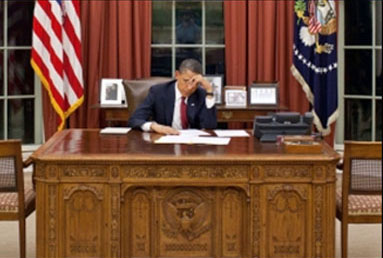The Obama Administration just finalized another regulation that adds an estimated $454 million to the cost of doing business, will cost much to enforce, and the Labor Department admits it is basically unnecessary. What is going on?

This regulation, branded the “Blacklisting Regulation” and a “Guidance” document that is supposed to assist in implementation of the regulation are hefty. The preview copy of the regulation comes in at 509 pages and the guidance, 369 pages.
From the very beginning, the Obama Administration has made a practice of shaming employers wherever possible. As such, their new regulation which deals with required disclosures from federal contractors should be viewed with this in mind as shaming appears to be the objective rather than their stated rationale.
The regulation requires federal contractors to maintain and report to their prospective government contracting party a list of findings against them regarding labor law violations. This list is to be made public as well. The regulation also implements other requirements; such as limits on the ability of such employers to use arbitration in certain employment law disputes. These regulations begin to go into effect in October.
The rationale for the regulation is that the government shouldn’t be contracting with bad employers and that this regulation is needed to find out if an employer is bad.
Up front, the U.S. Department of Labor, which is responsible for the guidance part of this, hints that the regulation isn’t necessary. The Department states, “By law, Federal agencies already must contract only with ‘responsible’ sources.”
This requirement is not new, but goes all the way back to 1884.
Yet, they are pushing ahead with more regulations anyway. That tells you everything you need to know about how this administration works. The administration would have us believe that the personnel who handle contracting don’t know how to find out information about prospective contractors, especially in the areas of violations of labor laws. As the regulation states,
Even if information regarding labor law decisions is made available, contracting officers generally lack the expertise and tools to assess the severity of the labor law violations brought to their attention and therefore cannot easily determine if a contractor’s actions show a lack of integrity and business ethics.
This is ironic given the huge push that the Labor Department has made during this administration to publicize enforcement data and to shame “bad” employers. One need only to go to the Labor Department’s online enforcement database to obtain a wide range of information on what the enforcement agencies have done regarding a particular employer.
One of the required disclosures under the regulation relates to violations of the Occupational Safety and Health Act. As it just so happens the Labor Department already publishes this information.
Would you like to see data on health and safety inspections that are conducted by the Occupational Safety and Health Administration (OSHA)? That is just a click away for the “approximately 100,000 OSHA inspections conducted annually.”
The regulation is essentially saying that agency personnel can’t find the database and can’t read it even if they can find it. This is rather uncomplimentary to say the least. This also makes one question why the Labor Department spent so much time and money on this project if they didn’t believe it would actually work.
The regulation and guidance come as a result of Executive Order 13673 by President Obama issued on July 31, 2014.
Among other things, the Order also requires the creation of new personnel positions, the “agency labor compliance advisors (ALCAs).” This means that every government contract just became more expensive because agencies will have to hire additional staff to fill these newly created positions and the contractors will have to work with this person.
Like all regulations, this one imposes other costs.
Even the government’s own paperwork burden estimate tells us that this will be expensive. The estimated first year costs to handle the paperwork associated with the regulation are over $454 million and every year after the estimated cost is $260 million. This doesn’t take into the cost to taxpayers for the additional agency officials that are required and the work that they are to do.
Rather than creating a new regulatory regime that will cost a quarter billion dollars a year, maybe agency officials should actually use the tools already available to them. But, that would get in the way of shaming employers, which is the real goal here.
Nathan Mehrens is President of Americans for Limited Government and previously served in the U.S. Department of Labor.





